Twitter is Faster: Personalized Time-aware Video Recommendation from Twitter to YouTube
Zhengyu Deng, Ming Yan, Jitao Sang and
Changsheng Xu*
Summary
(1) The information emergence and propagation is faster in social textual stream-based platforms than that in multimedia sharing platforms at micro user level.
(2) We propose a dynamic user modeling strategy to tackle personalized video recommendation issue in the multimedia sharing platform YouTube, by transferring knowledge from the social textual stream-based platform Twitter.
(3) We focus on integrating the user short-term interest from Twitter and long-term interest from YouTube to fully understand user perference.
Framework

The framework is divided into two steps: 1) Real-time hot topic detection and 2) Time-aware video recommendation. The inputs include the tweets users shared/reshared in Twitter and the user profile in YouTube; whereas the output is the generated video recommendation list.
Cross-network data analysis
The selected hot topics
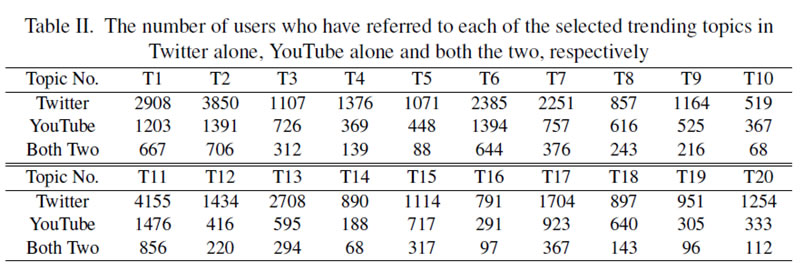
The statistic of users’ behaviors on the selected topics

Twitter is faster on global level
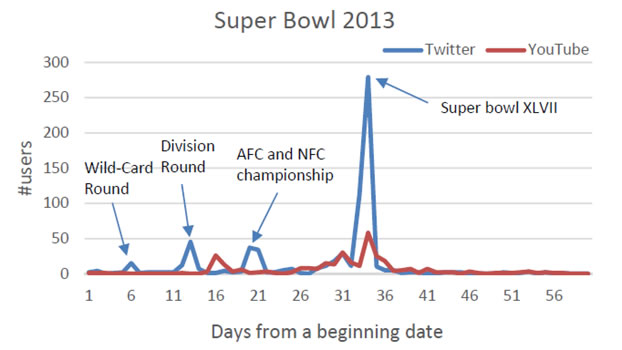
Twitter is faster on user level

According to our cross-platform data analysis, the information emergence and propagation is faster in social textual stream-based platforms than that in multimedia sharing platforms at micro user level.
Approach
Real-time hot topic detection
The hot topics user followed is extracted by G-Twitter-LDA which is a extension to Twitter-LDA.
--Twitter-LDA
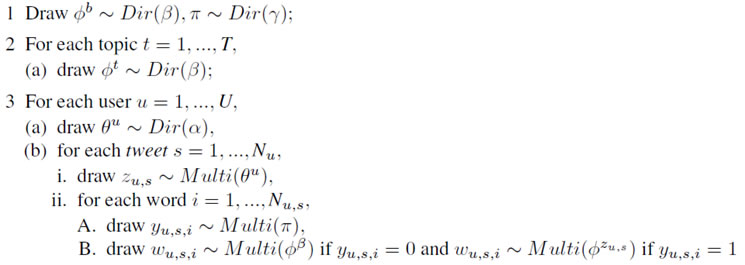
--G-Twitter-LDA
Import a global background model. For a word i the probabilities that it is generated by local background model or a topic t are calculated by:

Personalized video recommendation
1) Hot topic-related video extraction
Given a video v, its similarity with a hot topic t, is calculated by cosine value:
![]()
2) YouTube profile-based video re-ranking

Experiments
Examined strategies include:
recommend by random (Random);
recommend by trending videos (Trend); recommend by only Twitter hot topic (HT);
recommend by only YouTube user profile (UP);
recommend by Twitter hot topic and YouTube user profile (HT+UP);
recommend by Twitter hot topic and YouTube user profile considering time factor (HT+UP+TF);
recommend by Twitter hot topic and YouTube user profile considering quality factor (HT+UP+QF);
recommend by Twitter hot topic considering time and quality factors (HT+TF+QF);
recommend by YouTube user profile considering time and quality factors (UP+TF+QF);
recommend by Twitter hot topic and YouTube user profile with time and quality factors (HT+UP+TF+QF).
Experimental Results
The comparison of average F-score at different depths by different strategies is illustrated in the figure below . We can see that the method which combines hot topic in Twitter and user profile in YouTube considering time factor and quality factor (HT+UP+TF+QF) has the best performance.

The average F-score of all of the tested topics on all the hot topic-related strategies are shown in the figure below. We can see that the performances of different topics differ a lot. The performance of the topic "Google glass release" which has the highest F-score is far better than that of the topic "Dark Knight Rises release". Besides, the strategy that combines hot topic and user profile considering time factor and quality factor (HT+UP+TF+QF) has the best performance for most of the topics.
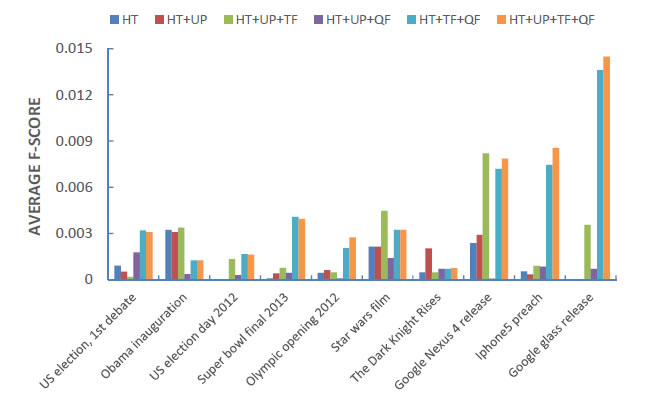
The influence of the five parameters on the recommendation performance in our model is shown in the figure below.
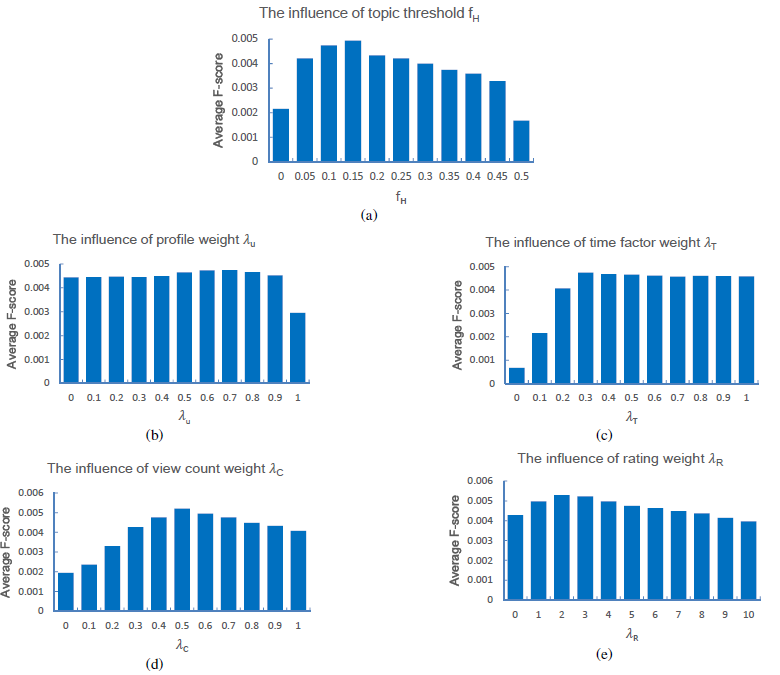
Publication
Personalized Celebrity Video Search Based on Cross-space Mining [pdf] [slides] [poster] [code] [data]
Zhengyu Deng, Ming Yan, Jitao Sang and Changsheng Xu
ACM Transactions on Multimedia Computing, Communications and Applications (TOMCCAP), accepted, 2014.